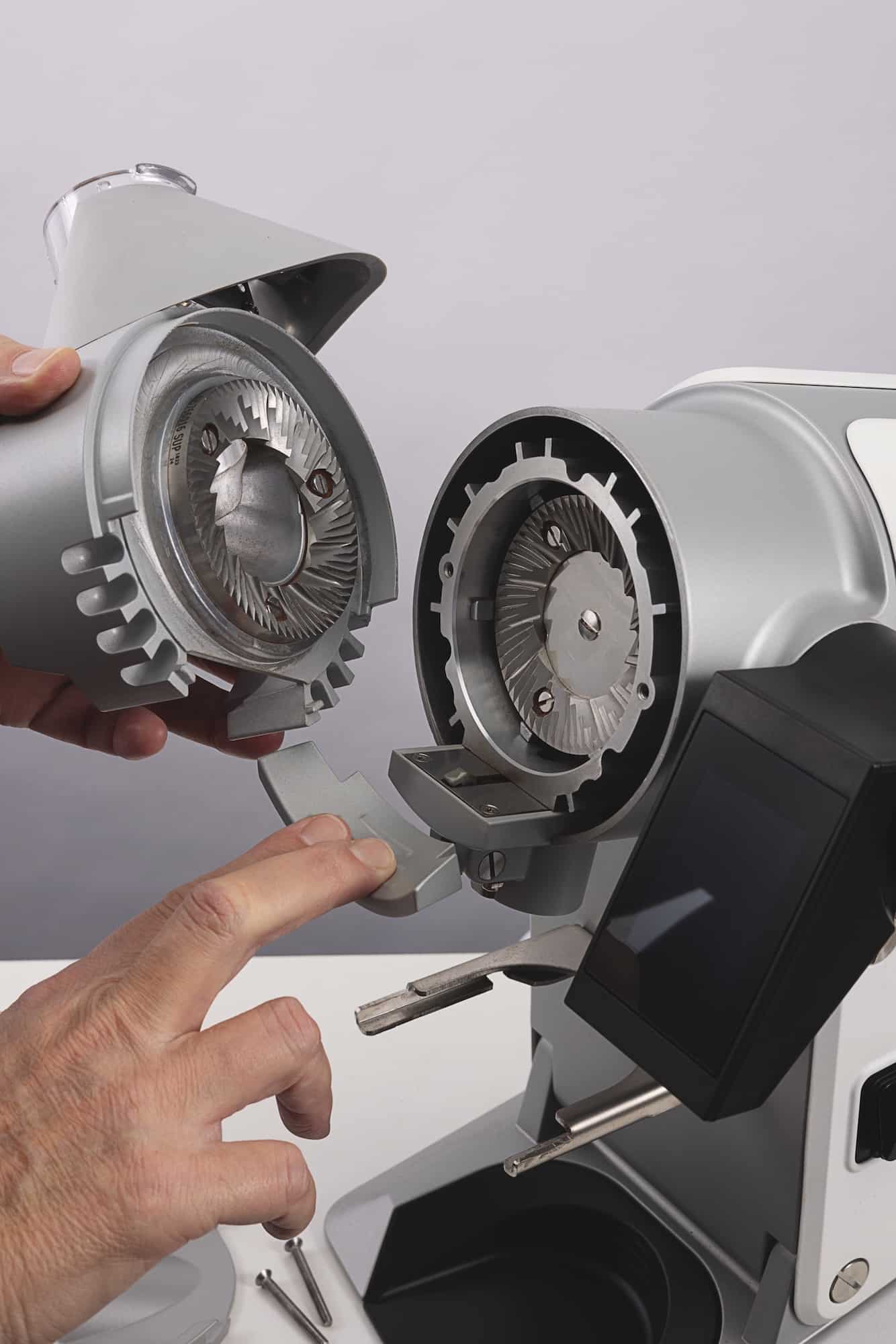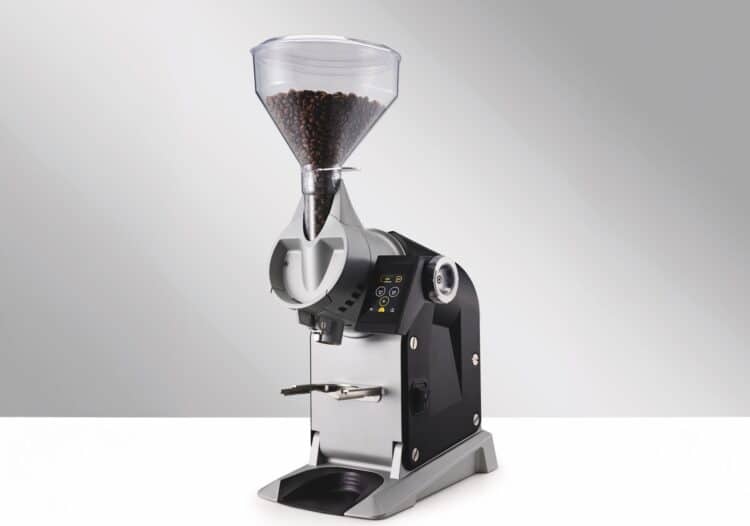The beverage market is changing and coffee is being challenged, but can choosing the right grinder help craft the ideal cup to win back consumers?
The popularity of traditional coffee is decreasing around the world, with café and espresso culture facing a challenge to attract new customers and build on its centuries of history.
The rise of soft drinks, signature drinks, and established trends including matcha and bubble tea has given consumers more options than ever before when selecting what to spend their money on.
Marco Tesconi, Cimbali Group Manager for Grinders, believes unless coffee quality improves, its status as a world-leading beverage could be in danger.
“In Europe, fewer young people are drinking espresso. The younger generation does not like the flavour and prefers sweeter things,” says Tesconi.
“The beverage market is amazing, with carbonated drinks and new recipes found in coffee shops, bars, bakeries, and bistros. If you don’t want to risk losing clients in the future, you must present the best coffee product possible to consumers.
“If we don’t improve the flavour of coffee, there is a huge risk an entire generation is going to be lost to it.”
As potential coffee consumers become more selective in their choices, the desire to improve the cup’s quality is being driven by improving machine technology. As part of this, Tesconi believes more consideration must be given to the grinder.
He says although there is already importance placed on grind size and weight, there is still opportunity to focus on more specific aspects of the grinding process.
“We spend a lot of time speaking about the technology of the coffee machine, blooming at infusion, temperature, and adjusting pressure profile, but when talking about the grinder it’s too often reduced to a motor to grind the coffee,” says Tesconi.
“The grinder is usually discussed in the wrong way. The grind size is not the only important thing. Of course, bigger is faster and finer is slower, but it’s uncommon for people to explore how granulometry can affect the final cup.”

Granulometry is the analysis of particle distribution. It determines the proportions of different particles, such as ground coffee, in any given sample. The way the burrs cut give the grounds different shapes, which are suited to different styles of coffee.
“The sharpness off the burrs and the speed at which they meet the beans impacts the shape of the grind. They could produce spherical grinds that allow water to pass through and retain aroma, or star shapes with flat edges that can connect and create a barrier which retains hot water and more decisively brews the coffee,” he says.
“When you take the grinder into consideration to this extent, you realise using different burrs can have a huge influence on the taste of the coffee, even if you are using the exact same recipe.”
Tesconi says the impact of properly considering granulometry could attract customers who previously found coffee to be too bitter, and help get the most out of the coffee itself.
“If you have spent €50 (US$58) on a bottle of wine that says it has notes of cherry, you don’t expect it to be bitter. If it is bitter, you will not buy that wine again – it’s the same with coffee,” he says.
“If you spend that same €50 on a bag of Panama Geisha, the coffee itself may be perfect, but if your recipe or grind is incorrect you will not get the best out of your beans and the coffee will not reach its full potential.”
With the rising price of green beans and a worldwide shift towards at-home coffee creation, for hospitality venues it’s more important than ever to craft a quality cup to keep customers coming back.
“I am convinced burrs will become a major topic of conversation within the next few years, because of the rising price of coffee,” says Tesconi.
“If it gets to a point where someone goes online to buy coffee at €200 a kilogram but doesn’t brew it in the right way, they are going to want to figure out the best way to make it. If someone invests a lot of money in coffee but cannot make it the right way, it becomes a waste.”
Cimbali has sought to address this issue through the creation of the Casadio Ermes Dual grinder in partnership with Keber Burrs, which was unveiled at The London Coffee Festival in May 2025.
Equipped with 75-millimetre burrs, the Ermes Dual offers real-time micron indications of burr distance and the ability to save up to five preferred recipes to enable the same grind every time.
Particle shape, friction, and ease of cleaning have all been considered in the creation of the grinder, which is designed by Chris Flechtner – who is also behind the iconic Slayer coffee machines.
According to Tesconi, what makes the Ermes Dual stand out from the crowd is the increased importance placed on the burrs.
“The burrs come above all. The grinder started from the burrs and we built everything around it,” he says. “The burrs are in a vertical position so they can clean completely, because we want the chamber to be completely empty to use different products.
“If the burrs are very fast and create random movement in the coffee, the friction will make the temperature of the particles increase. This can burn and caramelise the coffee during the resting process, effectively roasting it twice.
“We enlarged the space between the cuts to avoid friction of the particle, so we have even more speed for productivity but there is no bitter taste, which transforms the way espresso feels.”
The machine’s full-colour display shows the distance between burrs and gives users the ability to select recipes. Tesconi likens the display to a modern mobile phone, highlighting usability and accessibility have been prioritised in the grinder’s production.
“We made the user interface simple to use so you can read the distances of the burrs in microns,” he says. “This is the distance between the burrs, rather than the size of the granules.
“We have positioned this grinder in the median price range because, for me, quality must be available to everyone, and we must spread more knowledge about the importance of the coffee grinder. The best way to do that is to give people the opportunity to see how many microns is the correct distance for different coffees.”
With the grinder the first point of contact for the beans when crafting a cup, it can make or break the final product – whether it’s a café-made espresso or Chemex pourover.
While crafting the ‘perfect’ coffee every time is almost impossible, placing increased focus on the grinder means cafés can come closer to creating exactly what the customer wants and expects.
“What a perfect coffee actually is starts with the client or consumer who will drink it and then goes to the baristas and the coffee lovers who will create it. When you choose the correct grinder, you will be surprised at the different outcomes you can achieve,” says Tesconi.
“The grinder is the first piece of equipment needed to make the perfect coffee, and the perfect coffee is what a café owner or barista wants to sell.
“It should not be normal for a business to spend 95 per cent of their budget on a coffee machine and leave the grinder as an afterthought. A great grinder will help you create a great cup of coffee but also communicate to customers that a café knows what it is doing.”
For more information, visit casadio.com and keberburrs.com
This article was first published in the September/October 2025 edition of Global Coffee Report. Read more HERE.





